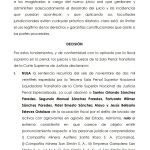May 13, 2023, 7:45 AM
May 13, 2023, 7:45 AM

Injured limbs need to rest. They are usually kept in a sling or cast to immobilize them to promote healing. But that can leave smaller, weaker muscles weeks later.
Rehabilitating these muscles takes a long time, and some people may not fully regain muscle strength and function.
Experts are now learning a little more about the “effect of cross-education“, whereby training one part of the body can result in increased strength on the opposite side of the body.
Our recent study shows that this too can slow the loss of muscle mass on the “disabled” arm.
So how can we take advantage of this effect?
That’s how it works
First discovered ago 100 years, the mechanisms behind the cross-education effect have not yet been fully understood. But this effect is probably associated with neural adaptations in the motor cortex of the brain that controls body movements.
Researchers reviewed nearly 100 studies and demonstrated that the average rate of cross-transfer between strength gains in trained muscle and untrained muscle ranged from 48% and 77%.
So, if the strength of your trained arm increased by 20% after training, the same muscle in your untrained arm might increase in strength by 10% even though you didn’t do anything with that arm.

These changes could be due to increased cortical excitability (the brain activity to control movement), reduced cortical inhibition (the signal to stop movements), reduced interhemispheric inhibition (the signals that direct movement instructions to one side of the body but not the other) and changes in voluntary activation or activation of new brain regions.
And it appears that the type of muscle contraction in training affects the degree of the cross-education effect.
There are three types of muscle contractions:
- isometricto (static) where the force produced by a muscle is equal to the weight it lifts, such as holding a dumbbell
- concentric (which shortens), where force is greater than weight, such as lifting a dumbbell
- eccentric (which stretches), where the force is less than the weight, such as lowering a dumbbell
Muscles can produce greater force during eccentric contractions than during isometric or concentric contractions.
And less fatigue occurs during eccentric contractions than other contractions. Resistance exercises—when muscles work against a weight or force—increase muscle strength and endurance through these types of muscle contractions.
Several studies report that exercises consisting only of eccentric muscle contractions (such as lowering a dumbbell but not raising it) produce a greater cross-educational effect than exercises that consist of only concentric contractions (only lifting weight) or concentric-eccentric contractions (lifting and lowering weight).
One study showed that eccentric exercise training affects brain-spine responses and arrest signals (inhibition) of the untrained limb to a greater extent than concentric training
Benefits
In 2021, we compared eccentric and concentric resistance exercise training for the cross-education effect in which 18 young people (aged 20-23 years) performed one-arm elbow flexor progressive resistance training twice a week. for five weeks using a dumbbell.
Both the eccentric (lengthening) and concentric (shortening) training groups increased muscle strength similarly after training (by 23 to 26%) for the trained arm.
But the untrained arm showed a greater increase in strength after eccentric training (23%) than after concentric training (12%).

The rate of transfer between both sides (the correspondence between strength gains on both sides) was much higher (91%) for eccentric training when participants lowered only one dumbbell, compared to concentric training (49%) when the they raised.
This is consistent with our previous study that showed a greater strength gain and more cross-education effect with eccentric training.
Published in February, our most recent study involved 12 young men and demonstrated how training one arm can prevent weakness in the other.
The lack of training showed a reduction in muscle strength and inactive arm size of up to 17%.
Concentric training reduced the loss to 4%. But eccentric training increased immobilized arm strength by 4% and completely eliminated atrophy (muscle wasting).
What to ask your physical therapist
These findings support the recommendation of resistance training using eccentric or lengthening movements of the non-immobilized limb to prevent loss of muscle strength and atrophy in real injuries such as sprains and ligament tears or bone fractures and after surgery.
So far, this type of training It has not been used much in rehabilitation. More research needs to be done on the mechanisms at play, but our findings could be used to make changes to how rehabilitation is implemented.
If you’ve suffered an injury or have undergone surgery and have an immobilized arm or leg, it’s important to talk to your doctor, surgeon or physical therapist to see if it would be worth exercising the corresponding limb on your good side, especially with movements of elongation against resistance or with a weight,
*Ken Nosaka is Professor of Exercise and Sport Science, Edith Cowan University, Australia
Remember that you can receive notifications from BBC Mundo. Download the new version of our app and activate them so you don’t miss out on our best content.















